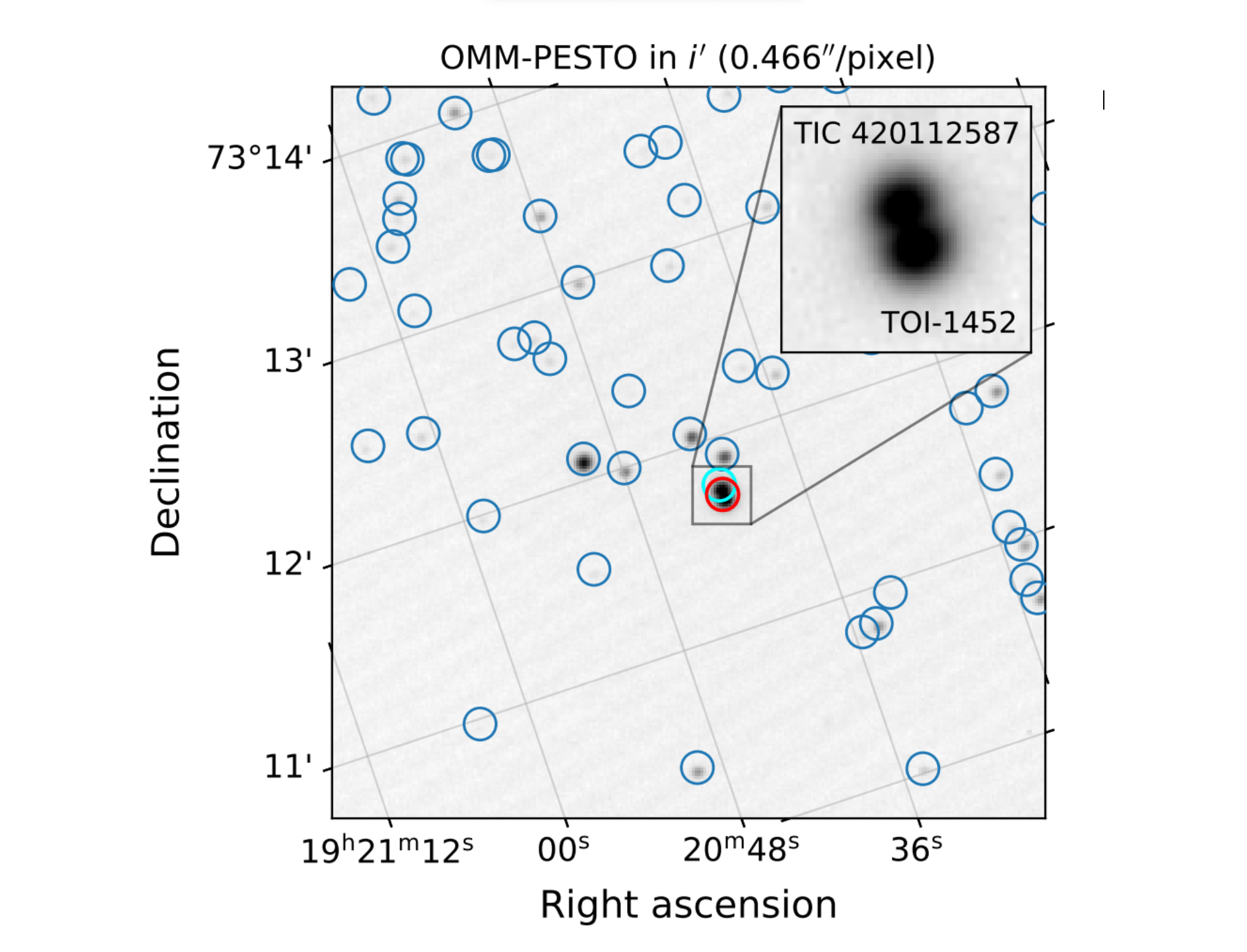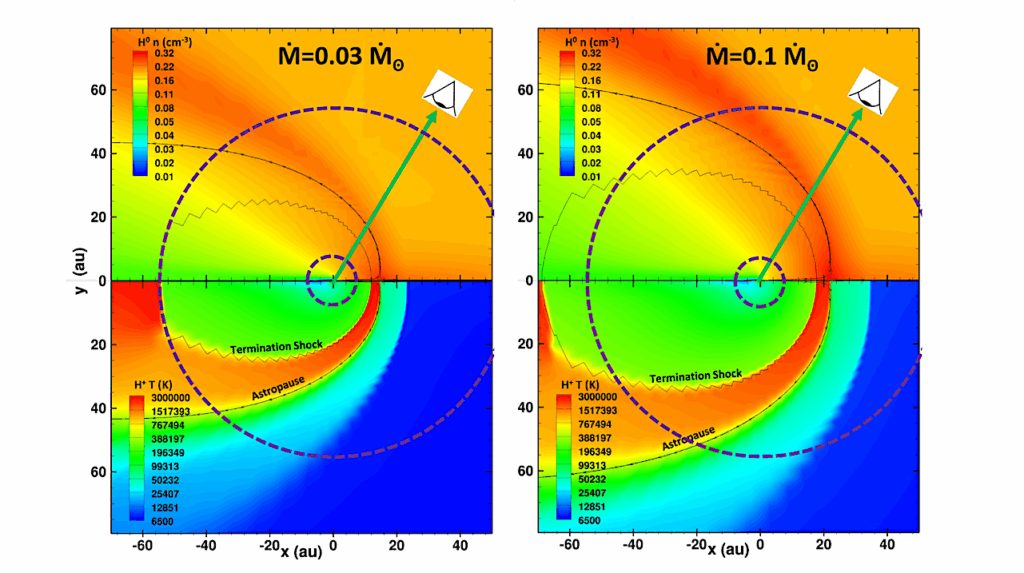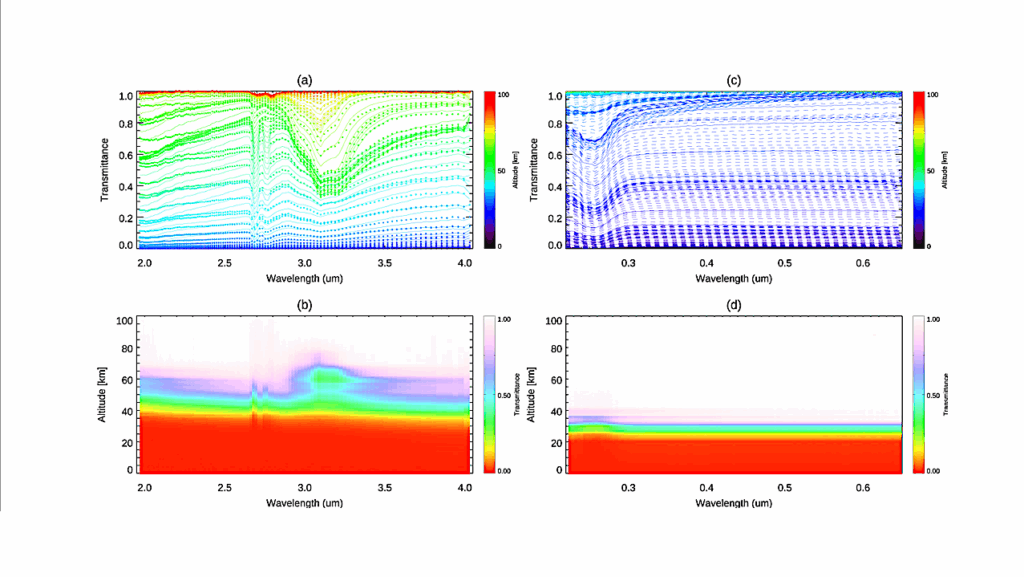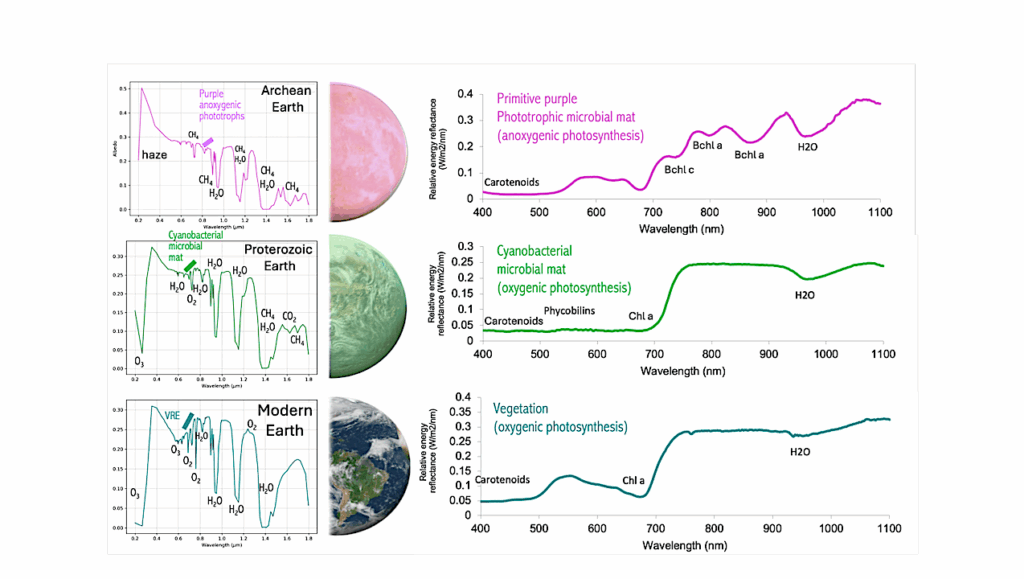TOI-1452 b: SPIRou And TESS Reveal A Super-Earth In A Temperate Orbit Transiting An M4 Dwarf

Exploring the properties of exoplanets near or inside the radius valley provides insights on the transition from the rocky super-Earths to the larger, hydrogen-rich atmosphere mini-Neptunes. Here, we report the discovery of TOI-1452 b, a transiting super-Earth (Rp=1.67±0.07 R⊕) in an 11.1–day temperate orbit (Teq=326±7 K) around the primary member (H=10.0, Teff=3185±50 K) of a nearby visual binary M dwarf.
Image: TOI-1452 observed with OMM-PESTO 1.6 m on 2020-02-22 (see Sect. 2.2). The visual binary was partially resolved.
The transits were first detected by TESS, then successfully isolated between the two 3.2′′ companions with ground-based photometry from OMM and MuSCAT3. The planetary nature of TOI-1452 b was established through high-precision velocimetry with the near-infrared SPIRou spectropolarimeter as part of the ongoing SPIRou Legacy Survey.
The measured planetary mass (4.8±1.3 M⊕) and inferred bulk density (5.6+1.8−1.6 g/cm3) is suggestive of a rocky core surrounded by a volatile-rich envelope. More quantitatively, the mass and radius of TOI-1452 b, combined with the stellar abundance of refractory elements (Fe, Mg and Si) measured by SPIRou, is consistent with a core mass fraction of 18±6 % and a water mass fraction of 22+21−13%.
The water world candidate TOI-1452 b is a prime target for future atmospheric characterization with JWST, featuring a Transmission Spectroscopy Metric similar to other well-known temperate small planets such as LHS 1140 b and K2-18 b. The system is located near Webb’s northern Continuous Viewing Zone, implying that is can be followed at almost any moment of the year.
Charles Cadieux, René Doyon, Mykhaylo Plotnykov, Guillaume Hébrard, Farbod Jahandar, Étienne Artigau, Diana Valencia, Neil J. Cook, Eder Martioli, Thomas Vandal, Jean-François Donati, Ryan Cloutier, Norio Narita, Akihiko Fukui, Teruyuki Hirano, François Bouchy, Nicolas B. Cowan, Erica J. Gonzales, David R. Ciardi, Keivan G. Stassun, Luc Arnold, Björn Benneke, Isabelle Boisse, Xavier Bonfils, Andrés Carmona, Pía Cortés-Zuleta, Xavier Delfosse, Thierry Forveille, Pascal Fouqué, João Gomes da Silva, Jon M. Jenkins, Flavien Kiefer, Ágnes Kóspál, David Lafrenière, Jorge H. C. Martins, Claire Moutou, J.-D. do Nascimento Jr., Merwan Ould-Elhkim, Stefan Pelletier, Joseph D. Twicken, Luke G. Bouma, Scott Cartwright, Antoine Darveau-Bernier, Konstantin Grankin, Masahiro Ikoma, Taiki Kagetani, Kiyoe Kawauchi, Takanori Kodama, Takayuki Kotani, David W. Latham, Kristen Menou, George Ricker, Sara Seager, Motohide Tamura, Roland Vanderspek, Noriharu Watanabe
Exploring the properties of exoplanets near or inside the radius valley provides insights
Comments: Published in The Astronomical Journal
Subjects: Earth and Planetary Astrophysics (astro-ph.EP); Solar and Stellar Astrophysics (astro-ph.SR)
Cite as: arXiv:2208.06333 [astro-ph.EP] (or arXiv:2208.06333v1 [astro-ph.EP] for this version)
Journal reference: AJ, 164, 96 (2022)
Related DOI:
https://doi.org/10.3847/1538-3881/ac7cea
Focus to learn more
Submission history
From: Charles Cadieux
[v1] Fri, 12 Aug 2022 15:42:07 UTC (15,275 KB)
FULL PAPER: https://arxiv.org/abs/2208.06333
Astrobiology,








